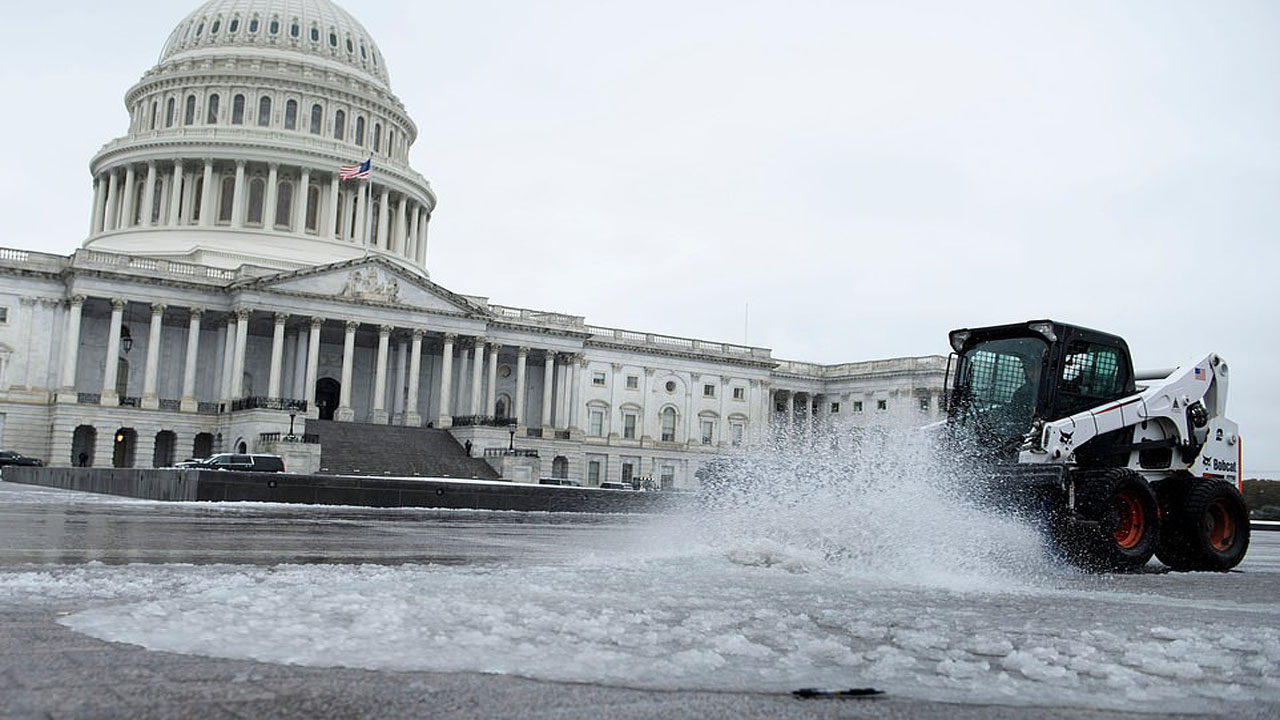Now Reading: Winter Storm Blair Unleashes Havoc Across the US: Fatalities, Power Outages, and Travel Gridlock
-
01
Winter Storm Blair Unleashes Havoc Across the US: Fatalities, Power Outages, and Travel Gridlock
Winter Storm Blair Unleashes Havoc Across the US: Fatalities, Power Outages, and Travel Gridlock

A powerful winter storm, dubbed Blair by the Weather Channel, has swept across a vast swathe of the United States, leaving a trail of destruction and disruption in its wake. From the Midwest to the East Coast, millions of Americans are grappling with heavy snowfall, icy conditions, freezing temperatures, and widespread power outages. Tragically, at least five deaths have been attributed to the storm, and the chaos on the roads and in the skies continues to mount.
A Blizzard of Misery
Winter Storm Blair began its assault late last week, blanketing numerous states with heavy snow and ice. The storm’s impact has been particularly severe in the Ohio Valley, the Mid-Atlantic region, and parts of the East Coast. Some areas have reported over a foot of snowfall, while others have been coated in a treacherous layer of ice, making travel extremely dangerous.
The combination of heavy snow, strong winds, and freezing rain has led to widespread power outages. Hundreds of thousands of homes and businesses have been left without electricity, forcing people to endure the frigid temperatures in the dark. Utility companies are working tirelessly to restore power, but the icy conditions and downed power lines are making repairs challenging.
Travel Networks Crippled
The storm has wreaked havoc on transportation networks across the country. Thousands of flights have been canceled or delayed, leaving countless travelers stranded at airports. Airlines are struggling to keep up with the ever-changing weather conditions, and passengers are facing long waits and uncertainty.
Road travel has also been severely impacted. Many roads and highways have been closed due to heavy snow and ice, and those that remain open are treacherous. Motorists are urged to avoid non-essential travel and to exercise extreme caution if they must venture out. The storm has also disrupted train and bus services, further compounding the travel woes.
States of Emergency Declared
In response to the storm’s devastating impact, states of emergency have been declared in several states, including Maryland, Virginia, West Virginia, Kansas, Missouri, Kentucky, and Arkansas. These declarations allow state governments to mobilize resources and provide assistance to affected areas. Emergency shelters have been opened to provide warmth and safety to those who have lost power or are unable to travel.
A Deep Freeze Grips the Nation
Adding to the misery, a wave of arctic air has swept across the country, plunging temperatures to record lows. Wind chill factors have made it feel even colder, with some areas experiencing wind chills well below zero. The extreme cold poses a serious risk of hypothermia and frostbite, and people are urged to take precautions to stay warm and safe.
The Human Cost
Tragically, Winter Storm Blair has claimed at least five lives. The deaths have occurred in separate incidents across the affected states and are a stark reminder of the storm’s deadly potential. Authorities are urging people to take the storm seriously and to heed all warnings and advisories.
Looking Ahead
While the worst of the storm may have passed for some areas, the cleanup and recovery efforts are just beginning. The massive amounts of snow and ice will take time to clear, and the power outages could persist for days in some areas. The extreme cold is expected to linger, posing continued risks to public safety.
A Call for Caution and Preparedness
Winter Storm Blair serves as a stark reminder of the power of nature and the importance of preparedness. As winter storms become more frequent and intense, it is crucial for individuals and communities to take steps to protect themselves and their property. This includes having a plan for power outages, stocking up on emergency supplies, and staying informed about weather conditions.
In the wake of Winter Storm Blair, communities across the US are coming together to support those in need. Neighbors are helping neighbors, and emergency responders are working tirelessly to restore order. While the storm has caused significant hardship, it has also demonstrated the resilience and compassion of the American spirit.
The following are some additional details about the storm’s impact:
- Power outages: Over 250,000 people were without power early Monday in Kentucky, Indiana, Virginia, West Virginia, Illinois, and Missouri.
- Travel disruptions: Over 2,300 flights have been canceled due to the storm.
- School closures: Schools have been closed in numerous states, including Ohio, Maryland, D.C., and Kansas.
- State of emergency: Seven states have declared states of emergency.
- Fatalities: At least five people have died in separate incidents across the United States due to the storm.
The National Weather Service has issued the following advice:
- Avoid non-essential travel.
- If you must travel, exercise extreme caution.
- Stay indoors and take precautions to stay warm.
- Check on elderly neighbors and relatives.
- Be prepared for power outages.
The American Red Cross has offered the following tips for staying safe during a winter storm:
- Stay indoors and avoid unnecessary travel.
- Dress in layers and wear warm clothing.
- Eat regularly and drink plenty of fluids.
- Conserve fuel and energy.
- Use flashlights instead of candles.
- Check on your neighbors, especially the elderly.
It is important to stay informed about the latest weather conditions and to follow the advice of local authorities. By taking precautions and working together, we can weather this storm and emerge stronger.










